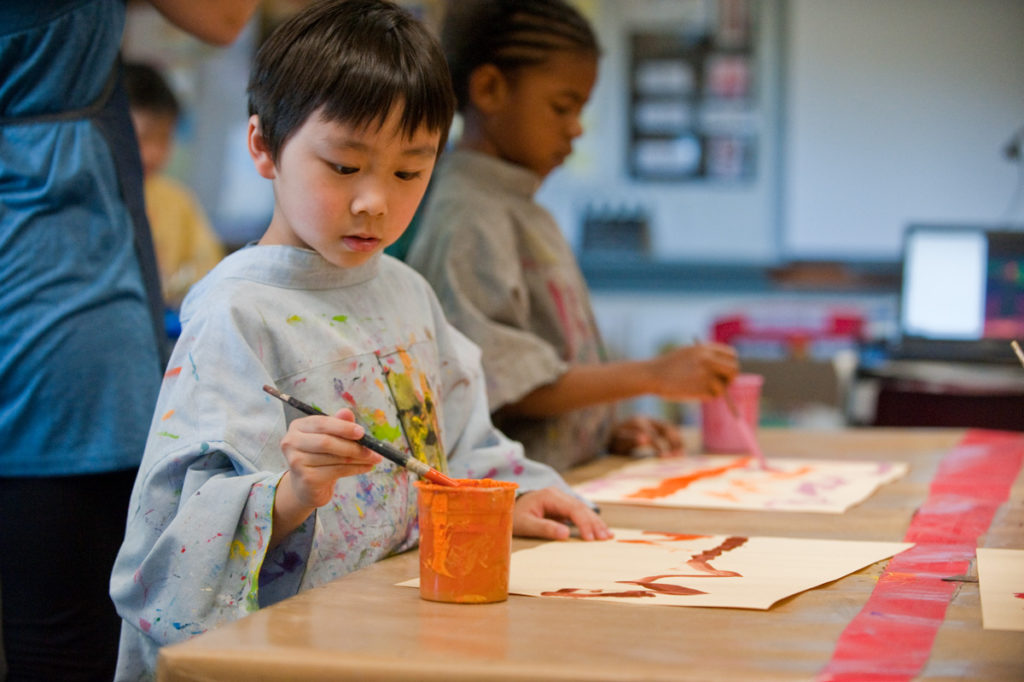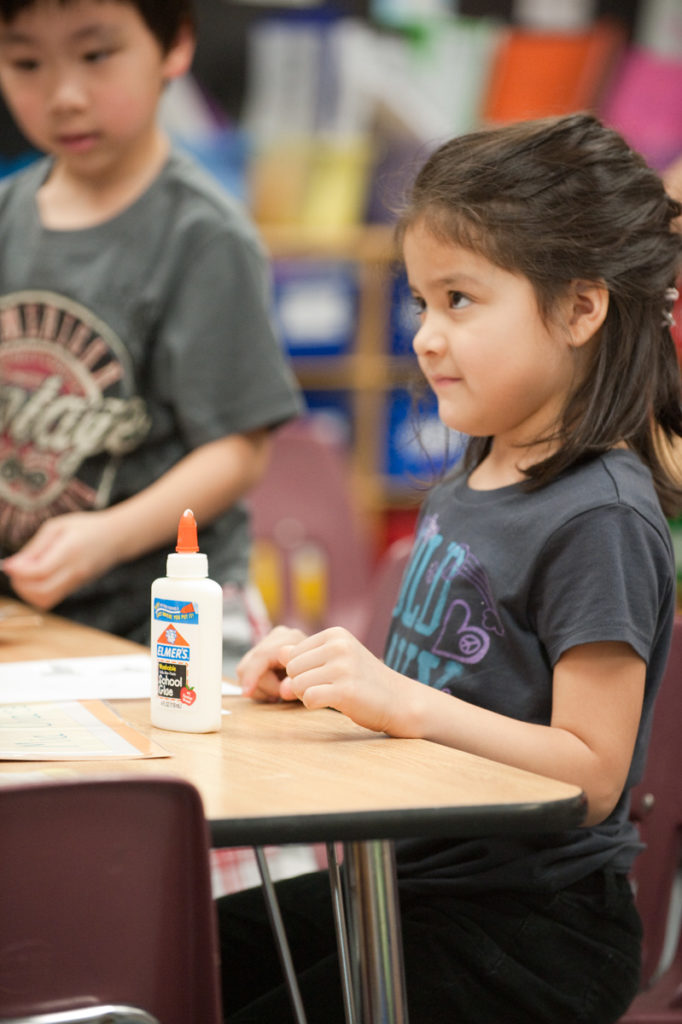
An adapted excerpt from Responsive Classroom for Music, Art, PE, and Other Special Areas. Published in July 2016 by Center for Responsive Schools, the book is packed with easy-to-implement ideas for adapting core Responsive Classroom practices to specialists’ unique teaching situations. Learn more about the book.
What happens in the first few minutes of each class period can have a huge impact on students’ focus and productivity throughout the rest of the period. A calm and orderly opening routine—a set of actions that students do in a certain way each time they enter the special area room—helps ensure that students ready themselves quickly for the day’s learning and work productively throughout the period.
Three key elements of any successful opening routine are students’ entry into the room, your greeting to them, and a message that orients them to the day’s learning.
An opening routine that supports productive learning actually begins before students enter the room and continues until you begin teaching the day’s lesson. As you think about how you want this key part of the period to look, try to visualize each of the following elements.
Where you’ll be. As you prepare for each class to enter the room, you may want to stand in the hallway, just inside the door, or at a gathering place students go to as soon as they walk in. Or time constraints may mean you need to set up or stow equipment or supplies from the last class as the next one enters. Any location can work as long as students know what to expect.
How students will enter. Will they line up in the hall and wait until you release them into the room? Or will they enter the room when their classroom teacher releases them? If your school has no set protocol for how students enter specials or other school areas, you can try both ways and see which works best for your special area and your teaching style.
What students will do right away. Once inside the room, will students immediately begin a warm-up activity, read a message from you, or move to a gathering area where you’ll work with the message as a class and then begin the day’s lesson?
Noise level. As students enter the room and begin getting settled, can they chat briefly and quietly with classmates? Or do you expect them to be silent? Whichever you choose, you can still make exceptions as needed. For example, if you typically teach students to enter and begin the period silently but their energy level seems low on a particular day, you might play some upbeat music or invite them to sing a favorite song as they go about their warm-up task.
Key Ideas

A simple, friendly greeting offered to students as they enter the special area room helps them feel welcome and tells them they can look forward to an engaging and productive time with you. Greeting is a way to build and maintain positive, trusting relationships with students you see for just a short time once or twice a week, and it encourages students to think of themselves as a special-area community.
Key Ideas
Gathering the class for one or two minutes to work with a message you’ve posted is the glue that holds together the entire period. Through the message, you can quickly build a sense of special-area community while piquing students’ interest in the day’s learning. And because reading and interacting with the message helps students develop their vocabulary, comprehension, and fluency skills, it also promotes literacy.
Here’s how to weave a message into your special area teaching.
You write the message in advance. For a simple, quick-to-prepare message, simply state the period’s agenda or the learning goal:
Dear students,
Today, we’ll find, download, and listen to a podcast.
You might decide to mention the learning students have already done or will do in the future:
Greetings, Researchers!
Last week, you explored “how-to” books and articles. Today, you’ll be writing your own “how-to” instructions.
And many teachers also add a question that invites students to stretch their thinking about content or skills:
Hi, soccer stars!
Today we will learn about dribbling a ball “soccer style.”
What do you already know about controlling a ball with your feet?
Students read the message. Students can go right to the message when they first enter the room, read it, and then do a warm-up task before the lesson begins. When they’ve finished their warm-up, you can gather them around the message to work with it as a group.
Or you can have students go straight to their warm-up task. When they’ve finished, you can gather them to read the message as a class.
The class works with the message together. A brief interaction with the message emphasizes its importance and strengthens students’ connection to the day’s learning. This task needn’t be time-consuming; it can consist of just two steps:
Key Ideas
The brief time you set aside for an orderly beginning to each period will pay off in many ways. When students start each period in a calm and predictable way, they’re better able to get down to work quickly, interact more productively with classmates, and engage more deeply with their learning. And that leaves more time for the special area learning you all love!
The go-to guide for busy special area teachers!
Discover how to seamlessly blend the powerful practices of Responsive Classroom into your daily teaching.
Related articles: